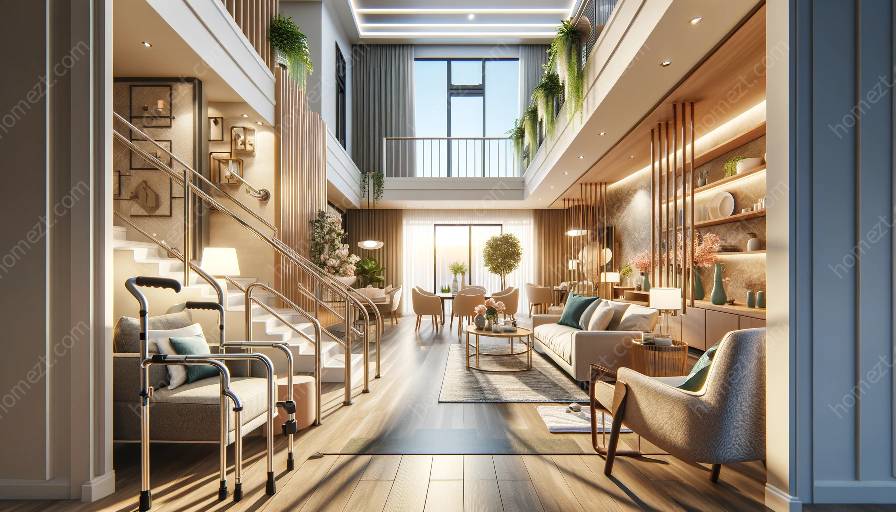As the population continues to age, there is a growing focus on rethinking interior design to prioritize safety for the elderly. This involves addressing the unique needs and challenges faced by the elderly population to create homes that promote independence and mitigate potential hazards. In this comprehensive guide, we'll explore innovative concepts, principles, and strategies for enhancing home safety and security for the elderly, aligning with the broader domain of elderly home safety.
The Importance of Elderly Home Safety
Home safety and security are critical considerations for the elderly, as they are more vulnerable to accidents and injuries within their living spaces. According to the Centers for Disease Control and Prevention (CDC), falls are the leading cause of fatal and non-fatal injuries among older adults. Therefore, rethinking interior design to enhance safety can significantly reduce the risk of such incidents and improve the overall well-being of the elderly.
Designing for Accessibility and Mobility
One of the key aspects of rethinking interior design for elderly safety is creating spaces that are accessible and promote mobility. This involves eliminating tripping hazards, ensuring easy navigation through the home, and incorporating features such as grab bars, ramps, and non-slip flooring. By optimizing the layout and accessibility of the living environment, elderly individuals can move around with greater confidence and independence.
Adapting Living Spaces to Changing Needs
Another important consideration is designing living spaces that can accommodate the changing needs of the elderly. This may include implementing adjustable furniture, ergonomic fixtures, and smart technologies that enhance convenience and comfort. Additionally, creating multi-functional areas, such as adaptable bathrooms and kitchens, can improve the practicality and usability of the home as individuals age.
Integrating Safety Features into Interior Design
Integrating safety features seamlessly into interior design is crucial for creating a secure home environment for the elderly. This encompasses the installation of adequate lighting, including motion-sensing and glare-reducing options, as well as incorporating ergonomic and user-friendly elements into furniture and fixtures to promote stability and reduce the risk of accidents.
Embracing Universal Design Principles
Embracing universal design principles is an effective approach to rethinking interior design for elderly safety. Universal design aims to make environments usable by people of all ages and abilities, emphasizing inclusivity and accessibility. By adopting universal design concepts, interior spaces can be optimized to accommodate the diverse needs of elderly individuals while maintaining aesthetic appeal and functionality.
Incorporating Technology for Enhanced Safety
The integration of advanced technologies can significantly enhance home safety and security for the elderly. From smart home automation systems to telehealth monitoring devices, incorporating technology into interior design allows for greater connectivity, emergency response capabilities, and overall peace of mind for both elderly individuals and their caregivers.
Collaborating with Professionals and Specialists
Ultimately, rethinking interior design for elderly safety often requires collaboration with interior designers, architects, healthcare professionals, and accessibility specialists. By leveraging their expertise and insights, innovative solutions can be implemented to create environments that prioritize the well-being and safety of the elderly.
Conclusion
Rethinking interior design for elderly safety entails a holistic approach that encompasses accessibility, adaptability, safety features, universal design, technological integration, and expert collaboration. By prioritizing the creation of safe, secure, and inviting living spaces for the elderly, we can contribute to enhancing their quality of life and promoting independence while mitigating potential risks within their homes.


